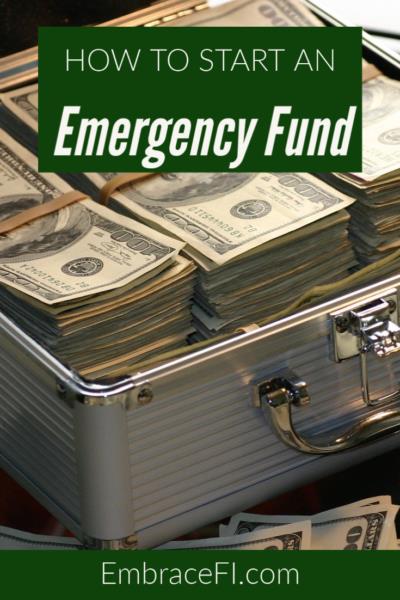6 Mins Reading Time
How to Start an Emergency Fund Today
In a perfect world, everyone would have an emergency fund set aside for the unexpected. But we don’t live in a perfect world and according to Bankrate’s latest Financial Security Index, nearly 30% of Americans don’t have a financial safety net for unforeseen expenses. If covid-19 taught us anything, it is to prepare as best you can financially for the unexpected.
Putting away for the future is something that might seem out of reach when you are trying to make it day-to-day but I have some simple and effective tips for how to not only get by but also invest in your financial future.
Keep reading for step-by-step instructions on how to start an emergency fund today!
Step One: Set a Goal and Keep it Realistic.
It sounds obvious. But if you don’t have a target dollar figure pre-established, you don’t have a jumping off point and this can hinder your ability to start saving. Even with a goal of as little as $20 a week, you can make significant progress over time. That $20 a week investment will grow to over $1,000 (before interest) in just one year’s time. Setting your weekly or monthly contribution goal at an achievable amount will dramatically increase your chances of success.
Experts recommend putting as much as six months to one year’s salary away for unexpected expenses. Be realistic about how much you can set aside from each paycheck and keep saving until you reach your goal.
Once you’ve reached your goal, do not stop saving! Simply divert your contributions to longer term and higher yield investments (such as CDs), while maintaining your emergency fund balance.
Step Two: Open a High Yield Savings Account.
When setting aside funds for the unexpected, it is ideal to have the monies someplace safe and interest bearing but where the temptation to spend will be minimized. An online savings account will keep the funds separate from your primary checking and savings but will also ensure they are readily available if needed. An added benefit of an online savings account is that virtual financial institutions often offer more favorable interest rates than their brick and mortar counterparts.
Stay away from account types that come with penalties for early withdrawal. Seeing as no one is ever expecting an emergency, you don’t know when you will need to access your funds and want to make sure you are not penalized for doing so.
Step Three: Divert a Portion of Each Paycheck to Your Emergency Fund Savings Account.
If your employer allows multiple direct deposits, settle upon a realistic percentage of your paycheck to automatically deposit into your emergency fund savings account. This helps reduce the temptation to spend the income you are planning to put away for the unexpected.
Step Four: Decrease Your Spending.
Look for places you can reduce your bottom line. Cutting back by a couple of lattes a week, bringing your lunch to work, or switching from paper towels to cloth might seem insignificant in the short term. But over time, those small changes will free up income that you can set aside for the unexpected.
Related Content on Spending:
Step Five: Increase Your Contributions Over Time.
When you get a raise at work, receive an income tax refund, or come into some unexpected financial gains, consider contributing some or all of those monies to your emergency fund. Doing so will help you reach your targeted dollar amount faster and augment the interest you are earning.
Step Six: Replenish Your Emergency Fund Any Time You Tap into it.
Having an emergency fund can mean the difference between making it through the unexpected and utter financial devastation. Make sure that you have a plan in place to replenish what you withdraw. If you are forced to dip into your emergency reserves, consider temporarily ramping up your contributions to accelerate the replenishment process and get back to your goal as quickly as possible.
How many months does your emergency fund cover? What age did you start saving for it?

